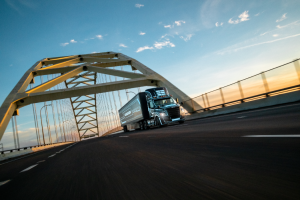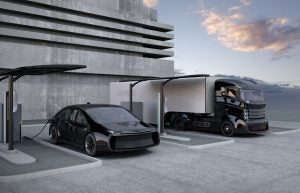 By Lauren Navarro and Tom Cackette
By Lauren Navarro and Tom Cackette
Update 4/11/23: This blog has been amended to incorporate changes to the proposed ACF rule made by CARB staff.
The Advanced Clean Fleets rule is a requirement for medium- and heavy-duty fleets to purchase an increasing percentage of zero-emission trucks. The ACF will complement the previously adopted Advanced Clean Trucks regulation requiring manufacturers to sell ZEV trucks and school buses. At the end of March, the Environmental Protection Agency granted California’s request for a Clean Air Act preemption waiver for the ACT, effectively granting support to this life-saving clean trucks rule, and paving the way for the California Air Resources Board to adopt the ACF.




